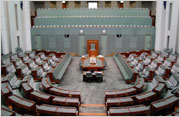Logistics, Resources - US Bases For The South China Sea
The United States is upping its military presence in the South China Sea in reaction to China's startling base-building campaign on islands that were already claimed by other countries. The US and the government of the Philippines late last week chose bases for the Americans to use under the the 2014 Enhanced Defense Cooperation Agreement.
US State Department spokesman Jack Kirby said has "made absolutely no bones about the fact that we take the rebalance to the Asia Pacific region very seriously". But the retired two-star Navy admiral claims there is "nothing offensive or provocative" about the planned deployment of US military assets.
"The US has talked about militarization in the South China Sea," said Chinese Foreign Ministry spokesperson Hua Chunying. "But can it explain whether its own increased military deployment in the region is equivalent to militarization?" he asked.
Overflights and satellite observances have revealed China's new bases in the Spratleys are equipped with rocket launchers, large machine guns, military runways and multi-storey buildings.
The decision on the Enhanced Defense Cooperation Agreement allows the Pentagon to use parts of five Philippine military installations: Antonio Bautista Air Base, Basa Air Base, Fort Ramon Magsaysay, Lumbia Air Base, and Mactan-Benito Ebuen Air Base. Of these, Bautista is closest to China's new military installations, just a few miles west of them on Palawan Island. It had been slated for upgrades before the deal, and those plans could expand with the arrival of the Americans. Basa Air Base, located outside Manila, is also close to the South China Sea. Most of these facilities were first constructed and used by US Forces during and after World War II, up until the US left the Philippines in the 1990s.
Trillions of dollars of trade pass through the South China Sea on container ships every year, and that includes Australian trade - especially because of Oz's membership in the Trans-Pacific Partnership (TPP). One-third of the world's liquefied natural gas (LNG) passes through the bottleneck in the Straits of Malacca and into the South China Sea; the bulk of its originates in the Persian Gulf. Southeast Asia and Oceania also ships LNG through the South China Sea, much of it bound for Japan and South Korea. In addition to being the place where Pacific and Indian Ocean shipping traffic meet, the South China Sea contains large oil and gas reserves, which each of the neighbors want in their own Exclusive Economic Zones (EEZ).








 Create PDF
Create PDF Print
Print Email to friend
Email to friend